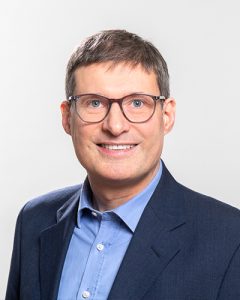 Multidimensional Isotope Analysis: Enabling Methodologies and New Opportunities
Multidimensional Isotope Analysis: Enabling Methodologies and New Opportunities
Prof. Dr. Martin Elsner, Chair of Analytical Chemistry and Water Chemistry, Institute of Hydrochemistry, School of Natural Sciences, Department of Chemistry, Technical University of Munich, Lichtenbergstr, Garching
Stable isotope analysis plays a central role in many disciplines. The distribution of stable isotopes (e.g., 13C/12C, 2H/1H) at natural isotopic abundance can be tapped as a unique source of information to distinguish substances that are otherwise chemically identical. Industrial chemicals and natural products may carry characteristic isotope patterns that can be used as fingerprints to infer the origin of food ingredients, prove doping in sports, or to identify the responsible party in groundwater contaminations. In addition, isotope fractionation – i.e., the changes in isotope ratios during transformation reactions – can be investigated to study chemical reactions, elucidate the mechanism of catalysis and explore the fate of environmental pollutants. Such information from isotope ratios becomes increasingly conclusive if more dimensions of isotopic information become accessible – either in the form of isotope ratios from multiple elements in the same compound, or in the form of site-specific isotope ratios of the same element in different molecular positions. Over the last decade, analytical advances have enabled multielement compound-specific isotope analysis by gas chromatography – isotope ratio mass spectrometry. Recent advances with high-resolution molecular mass spectrometry even offer an emerging opportunity to access intramolecular isotope ratios. An overview is given of these advances on different fronts, prospects, limitations and emerging opportunities.
References:
T. B. Hofstetter, R. Bakkour, D. Buchner, H. Eisenmann, A. Fischer, M. Gehre, S. B. Haderlein, P. Höhener, D. Hunkeler, G. Imfeld, M. A. Jochmann, S. Kümmel, P. R. Martin, S. G. Pati, T. C. Schmidt, C. Vogt, M. Elsner, Perspectives of compound-specific isotope analysis of organic contaminants for assessing environmental fate and managing chemical pollution, Nature Water 2 (2024), pp. 14–30, DOI: 10.1038/s44221-023-00176-4
C. Neubauer, K. Kantnerova, A. Lamothe, J. Savarino, A. Hilkert, D. Juchelka, K.-U. Hinrichs, M. Elvert, V. Heuer, M. Elsner, R. Bakkour, M. Julien, M. Öztoprak, S. Schouten, S. Hattori, T. Dittmar, Discovering Nature’s Fingerprints: Isotope Ratio Analysis on Bioanalytical Mass Spectrometers, Journal of the American Society for Mass Spectrometry 34, 4 (2023) pp. 525–537, DOI: 10.1021/jasms.2c00363
Martin Elsner (*1972 in Hamburg) studied chemistry at the University of Freiburg and ETH Zürich, and earned his doctorate in environmental sciences at ETH Zürich (2003). After postdoctoral stays at EAWAG and at the University of Toronto he moved to Helmholtz Zentrum München, Institute of Groundwater Ecology, where he headed a Helmholtz Young Investigator Group (2006-13) and, in the course of an ERC Consolidator Grant, his own research unit (2014-17). In 2011 he earned his venia legendi at the University of Tübingen in Analytical Chemistry und Environmental Chemistry. Since 2017 Martin Elsner is Full Professor of Analytical Chemistry and Water Chemistry, and director of the Institute of Hydrochemistry at TUM.
His research targets analytical method development to investigate the fate of chemicals and microorganisms in complex systems, with a particular focus on characterizing underlying (bio)chemical reaction mechanisms. Besides laser-, particle- and bioanalytics, research at the Institute of Hydrochemistry focuses on compound-specific isotope analysis to analyze isotope effects at natural abundance. Through analytical innovation the Institute contributes to a better management of chemicals in the environment, to characterizing natural attenuation and to optimizing turnover in technical systems.
Martin Elsner was awarded a Helmholtz Young Investigator Grant in 2006 and an ERC Consolidator Grant in 2013. He was selected for the “Helmholtz Academy for Executives” in 2011, received the Water Chemistry Price of the GDCh in 2013 and became Member of the Young Academy of Europe in 2015. He is author of over 130 publications, for a full list see http://www.researcherid.com/rid/J-4637-2012
